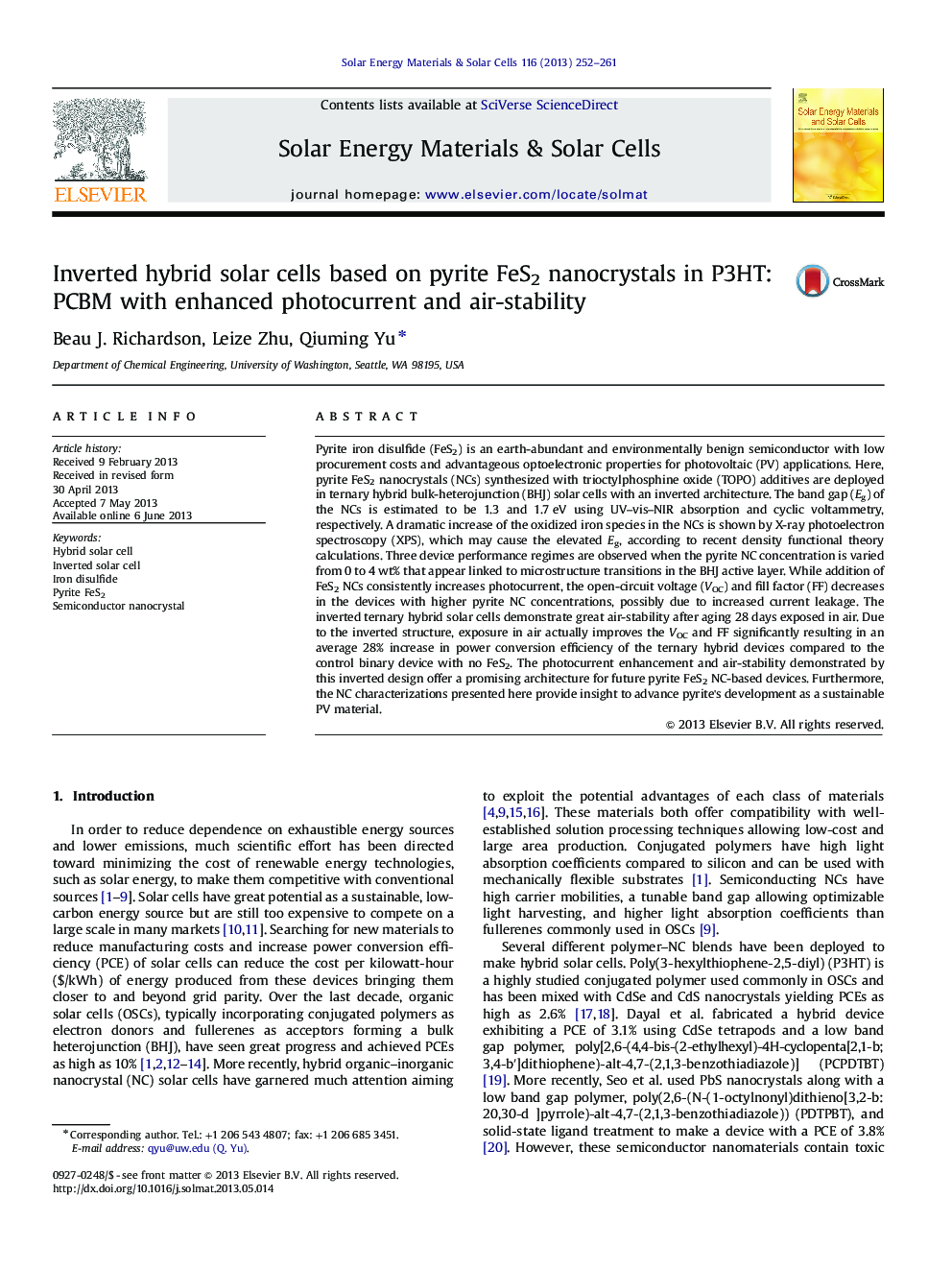| Article ID | Journal | Published Year | Pages | File Type |
|---|---|---|---|---|
| 6536357 | Solar Energy Materials and Solar Cells | 2013 | 10 Pages |
Abstract
Pyrite iron disulfide (FeS2) is an earth-abundant and environmentally benign semiconductor with low procurement costs and advantageous optoelectronic properties for photovoltaic (PV) applications. Here, pyrite FeS2 nanocrystals (NCs) synthesized with trioctylphosphine oxide (TOPO) additives are deployed in ternary hybrid bulk-heterojunction (BHJ) solar cells with an inverted architecture. The band gap (Eg) of the NCs is estimated to be 1.3 and 1.7Â eV using UV-vis-NIR absorption and cyclic voltammetry, respectively. A dramatic increase of the oxidized iron species in the NCs is shown by X-ray photoelectron spectroscopy (XPS), which may cause the elevated Eg, according to recent density functional theory calculations. Three device performance regimes are observed when the pyrite NC concentration is varied from 0 to 4Â wt% that appear linked to microstructure transitions in the BHJ active layer. While addition of FeS2 NCs consistently increases photocurrent, the open-circuit voltage (VOC) and fill factor (FF) decreases in the devices with higher pyrite NC concentrations, possibly due to increased current leakage. The inverted ternary hybrid solar cells demonstrate great air-stability after aging 28 days exposed in air. Due to the inverted structure, exposure in air actually improves the VOC and FF significantly resulting in an average 28% increase in power conversion efficiency of the ternary hybrid devices compared to the control binary device with no FeS2. The photocurrent enhancement and air-stability demonstrated by this inverted design offer a promising architecture for future pyrite FeS2 NC-based devices. Furthermore, the NC characterizations presented here provide insight to advance pyrite's development as a sustainable PV material.
Related Topics
Physical Sciences and Engineering
Chemical Engineering
Catalysis
Authors
Beau J. Richardson, Leize Zhu, Qiuming Yu,
